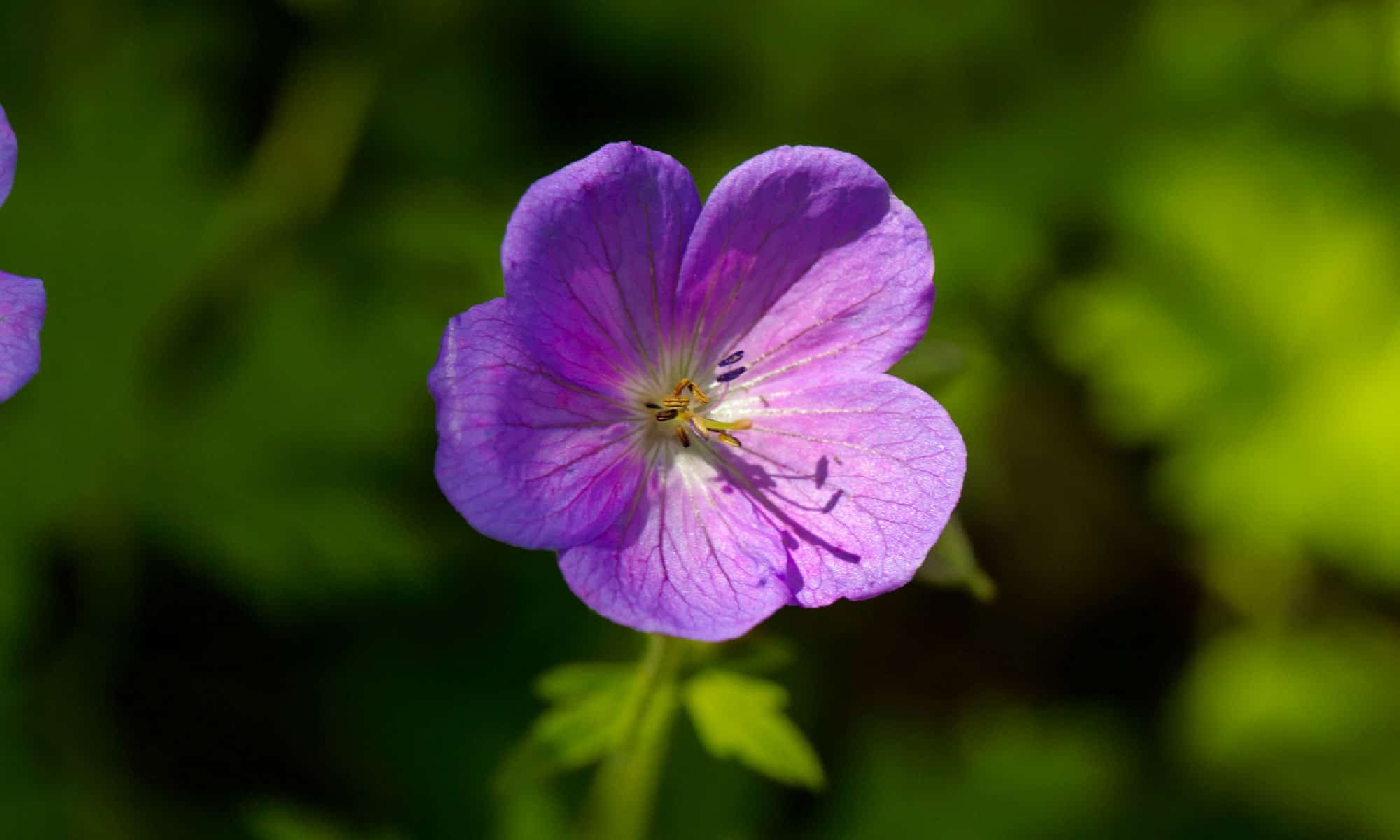Perennial geraniums add beautiful blooms and pleasing fragrances to any garden. But how do you choose which perennial geraniums to plant? First, discover our list of the six best perennial geraniums that come back every year! Then check out our handy quick reference list of basic geranium types to help with your garden planning.

But before we get started discussing our featured geraniums, here are four valuable facts about geranium plants:
- Most perennial geraniums are deer and rabbit-resistant.
- Perennial geranium leaves usually turn reddish in the fall, but reddish leaves could also indicate low phosphorous levels.
- Many perennial geraniums are fragrant, but their scents vary between varieties. Some plants smell like ginger or lemon. Some geraniums smell like strawberries!
- Perennial geraniums are called cranesbills, named after their sepals shaped like the bills of cranes. The five perennial geraniums below are all cranesbills. In addition, these lovely plants all look more like wildflowers straight from the meadow than the common potted geraniums you might grow indoors.
1. Himalayan Geranium

The
Himalayan
geranium loves moist soil and cool weather.
©iStock.com/weisschr
Geranium himalayense or Himalayan geranium is a compact variety perfect for rock gardens or as an accent plant in beds and pots. The Himalayan geranium has beautiful lavender, blue, or violet flowers that bloom through the summer months. This variety is also deer and rabbit-resistant, making it a good choice for gardens where these pests are common.
Himalayan geraniums love cool weather and moist soil. They’re also adaptable to shady areas, so they make great plants to place next to your tall rose bushes or under a backyard tree. However, geraniums that get a lot of shade are more susceptible to slugs, so watch for these garden pests!
- Botanical name: Geranium himalayense
- Common names: Himalayan geranium, lilac cranesbill
- Hardiness Zones: 4-8
- Bloom colors: blue, lavender, violet
- Bloom time: summer
- Mature plant size: up to 2 feet wide with a 2-foot spread
- Sun needs: full sun to partial shade or full shade
- Soil needs: moist and well-draining
- Pollinators: attracts butterflies
- Plant description: showy deciduous perennial with compact foliage, long stems, and cup-shaped blooms
2. Spotted Geranium
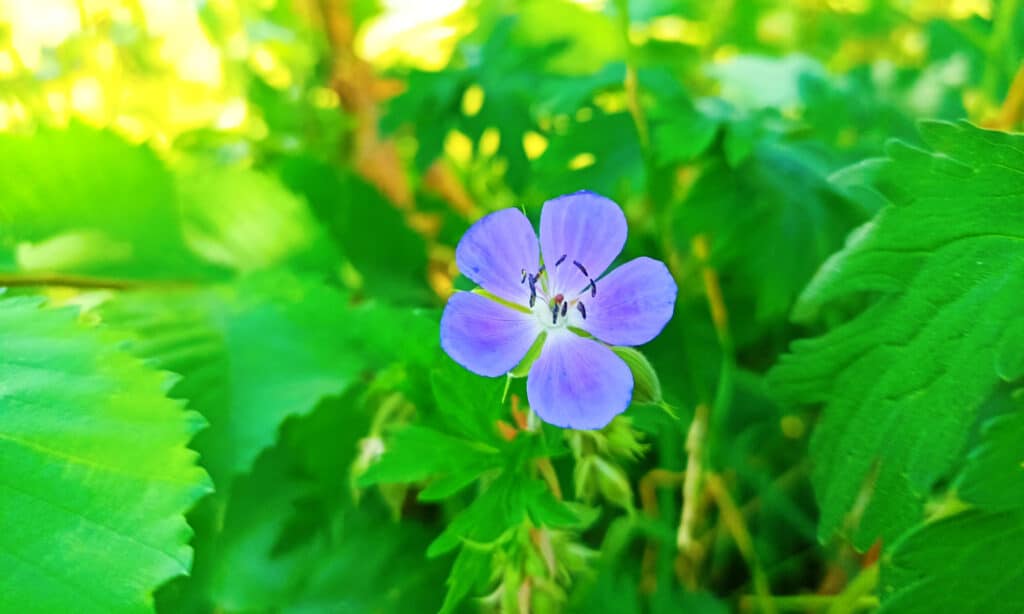
The spotted geranium grows beak-shaped capsules after its flowers die off.
©iStock.com/Natalila Paziura
Geranium maculatum, or spotted geranium, is a long-blooming variety that is perfect for ground cover or mass plantings. Hardy and drought-tolerant, the spotted geranium has pale round flowers from pink to white. This shade-tolerant perennial plant typically blooms from May to July.
Like the Himalayan geranium and the other cranesbill geraniums on this list, the spotted geranium grows beak-shaped capsules after its flowers die off. These beak shapes are where the common name cranesbill comes from for this and other geranium varieties.
- Botanical name: Geranium maculatum
- Common names: spotted geranium, spotted cranesbill, wild geranium, alum bloom
- Hardiness zones: 3-8
- Bloom colors: pink, white, light purple
- Bloom time: spring to summer
- Mature plant size: 12-24 inches tall with an 18-24 inch spread
- Sun needs: full sun to partial shade
- Soil needs: medium moist and well-drained
- Pollinators: attracts bees, beetles, and butterflies
- Plant description: deciduous perennial with mounded foliage and clustered saucer-shaped blooms
3. Madeira Geranium
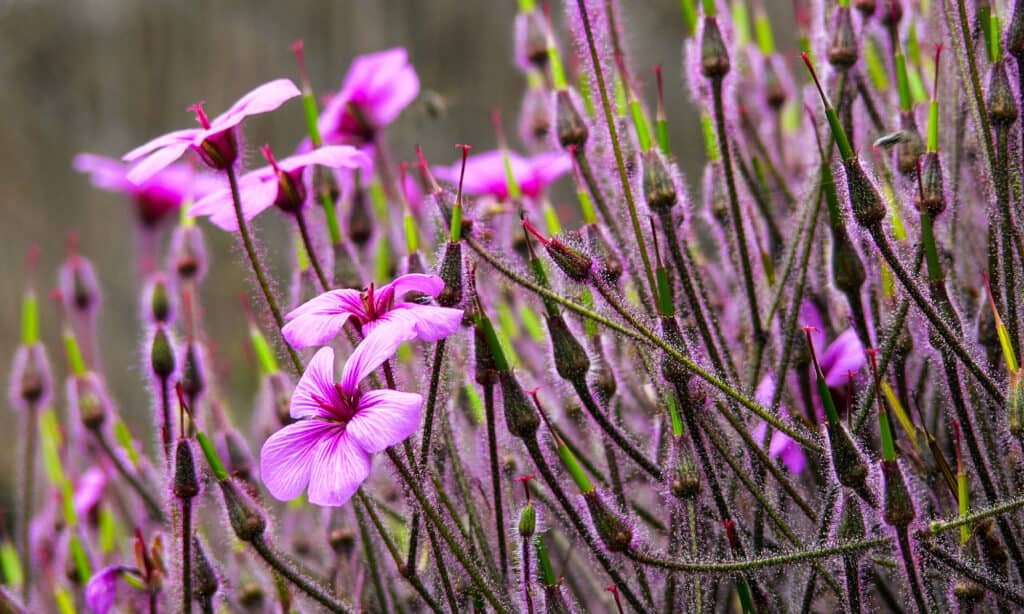
Madeira geraniums have sticky hairs.
©iStock.com/Chris102
Geranium maderense, also known as the Madeira geranium, is a large plant native to the Portuguese island of Madeira. It has bright bi-color blooms in pink and purple, with lush foliage. Though technically a biennial, this showy geranium is a hardy self-sower. For that reason, it should keep growing back from self-germination each year. Madeira geraniums bloom from May to September.
The Madeira geranium is among the best perennial geraniums that come back every year because of its hair. Yes, you read that right! Madeira geranium sepals and stems are blanketed with tiny glandular hairs that are purple and sticky. The hairs look quite luminescent in the sunlight. One advantage of the Madeira geranium’s hair is that insects get caught in them, which aids in plant pollination.
- Botanical name: Geranium maderense
- Common names: Madeira geranium, Madeira cranesbill, Madeira Island geranium
- Hardiness zones: 8 to 9
- Bloom colors: pink and purple (bi-color)
- Bloom time: spring to late summer
- Mature plant size: 12-24 inches tall with a 24-36 inch spread
- Sun needs: full sun, partial shade, full shade
- Soil needs: moist and well-drained
- Pollinators: attracts bees and butterflies
- Plant description: showy evergreen perennial with deeply lobed leaves and saucer-shaped blooms
4. Meadow Geranium

Meadow geraniums only bloom in the summer.
©Andrew Pustiakin/Shutterstock.com
Geranium pratense, or meadow geranium, is a lovely flowering perennial that looks like it comes from a pretty fairytale meadow. This tall geranium that grows up to 3 feet high has large saucer-shaped blooms in blue, lavender, or white. Unfortunately, the meadow geranium only blooms in the summer. Yet it’s worth the short flowering season!
Like other perennial geraniums, the meadow geranium is drought-tolerant and does well in shady areas. Meadow geraniums are also known for their use in dried flower arrangements. The blooms hold their color well when dried, making them a beautiful addition to bouquets and wreaths.
- Botanical name: Geranium pratense
- Common names: meadow geranium, meadow cranesbill, crowfoot
- Hardiness zones: 3-9
- Bloom colors: blue, white, violet
- Bloom time: late spring through fall
- Mature plant size: up to 3 feet tall and a 3-foot spread
- Sun needs: full sun, partial shade, shade
- Soil needs: needs medium moisture and well-drained soil
- Pollinators: attracts bees, butterflies, and moths
- Plant description: herbaceous perennial with mounded foliage and large saucer-shaped blooms
5. Blood-red Geranium

Blood-red geraniums are tolerant of poor soil conditions.
©Jane Nadezhina/Shutterstock.com
Geranium sanguineum, also known as the blood-red or bloody geranium, is named for its dark red leaves in the fall. It’s one of the best perennial geraniums that come back every year for its striking fall foliage. In spring and summer, the blood-red geranium has green foliage and bright pink saucer-shaped blooms. This geranium variety blooms from May to September.
The blood-red geranium is a low-maintenance plant perfect for rock gardens, borders, and mass plantings. It’s also tolerant of poor soil conditions, drought, and partial shade.
- Botanical name: Geranium sanguineum
- Common names: blood-red geranium, bloody geranium
- Hardiness zones: 4-8
- Bloom colors: pink
- Bloom time: spring through summer
- Mature plant size: up to 24 inches tall with a 2-foot spread
- Sun needs: full sun, partial shade
- Soil needs: grows well in a variety of soil types; prefers well-drained soil
- Pollinators: attracts bees and butterflies
- Plant description: rhizomatous perennial with deeply lobed leaves and clusters of saucer-shaped blooms
6. Wood Geranium
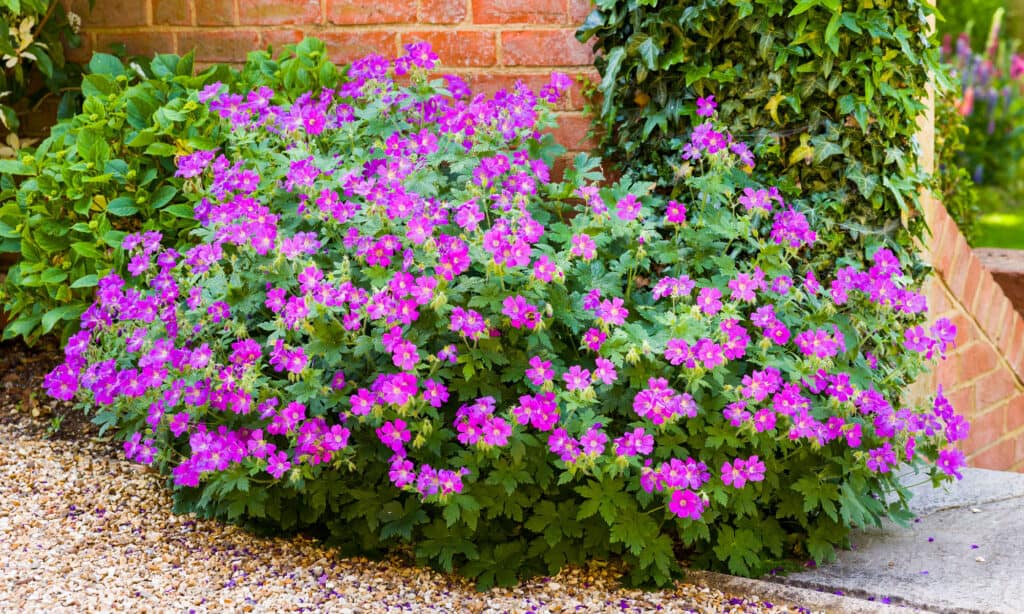
Wood geranium is a low-maintenance plant.
©Paul Maguire/Shutterstock.com
Geranium sylvaticum, or wood geranium, has lavender-blue flowers and blooms from late May to July. This geranium has lobed and toothed leaves in bushy foliage, topped by cup-shaped flowers. The wood geranium is a compact, low-maintenance plant. And it’s excellent for shady gardens and woodland areas.
- Botanical name: Geranium sylvaticum
- Common names: wood geranium, woodland geranium, wood cranesbill
- Hardiness zones: 5-9
- Bloom colors: lavender-blue with white centers
- Bloom time: spring and summer
- Mature plant size: up to 2 feet tall with a 3-foot spread
- Sun needs: full sun, partial sun
- Soil needs: medium moist and well-draining soil
- Pollinators: attracts bees and butterflies
- Plant description: deciduous perennial with toothed leaves, cup-shaped blooms, and mounding habit
Geranium Types: How Do You Know Which Geraniums to Grow?
Should you grow perennial geraniums or opt for annual varieties? What are some of the common geranium types within each? These and many more questions about geranium types and their differences can be overwhelming. So let’s take a look at some geranium basics.
First, know that annual plants last for one season, whereas perennial plants regrow every year. With that in mind, let’s take a quick look at some geranium options to help you with your garden planning.
Annual geraniums: Annual geraniums last for only one growing season in most hardiness zones. They typically bloom from May until the first frost in fall (depending on where you live) unless you grow them indoors. Yes, these are wonderful plants to grow indoors!
Here’s a fun fact: annual geraniums aren’t geraniums; they’re pelargoniums. We’ll explain more in the following two sections of this article.
Perennial geraniums: These are hardy plants that come back year after year. They typically bloom from May until July (again, depending on where you live.) Most have more of a wildflower look than annual geraniums. The five specific plants we feature in this article are perennial geraniums.
Popular Types of Geraniums That Aren’t Really Geraniums
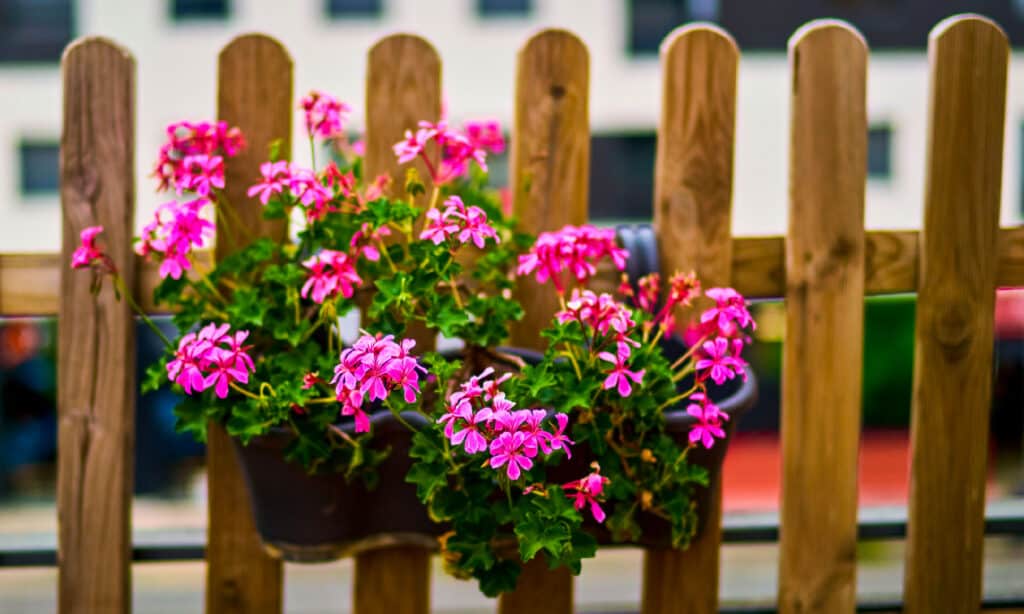
Ivy geranium is actually a pelargonium.
©iStock.com/Jose Gulias Trigas
The following plants are pelargoniums but are often called geraniums. This mistaken identity is because pelargoniums are closely related to geraniums, look like geraniums, and might as well be geraniums. But these plants aren’t as hardy, so they don’t overwinter well unless you grow them indoors.
Are you confused yet? Well, join the club. But we’ll explain more about pelargoniums vs. geraniums in the next section of this article. So, for now, we’ll use the common name geranium for these plants below.
Ivy geraniums (Pelargonium peltatum): Ivy geraniums have ivy-shaped leaves and a cascading or scrambling growth habit.
Regal geraniums (Pelargonium grandiflorum): Regal geraniums or Martha Washington geraniums are classified as tropical perennials but are usually grown as annual plants. They typically bloom from spring through fall.
Scented geraniums (Pelargonium graveolens): Scented geraniums are tender perennials usually grown as annuals in most hardiness zones. These plants typically bloom from spring until the first frost in fall. Scented geraniums have a strong, pleasing fragrance. Apple geraniums (Pelargonium odoratissimum) are examples of sweet-smelling scented geraniums. Yes, they smell like apples!
Zonal geraniums (Pelargonium zonale): Zonal geraniums are annual plants. They are known for their distinctive leaves, marked with a dark “zone” or circle around the center.
Geranium vs. Pelargonium: Confusing Gardeners for Hundreds of Years
When you start doing geranium research, you might be surprised to learn that some geraniums aren’t actually geraniums at all. That’s because some plants that we call geraniums are officially in the genus Pelargonium instead. The confusion about these two classifications is so widespread that there’s a book dedicated to this subject!
Does it matter which is which? Indeed it does! But first – here’s a 30-second history of how geranium confusion began.
It all started back when geraniums were first identified. Swedish botanist Carl Linnaeus formally identified the geranium in 1753. Then, French botanist Charles Louis L’Héritier de Brutelle studied the same plants in 1789 and divided them into genera Geranium and Pelargonium.
But the classification change didn’t seem to take with every geranium fan. So, that led to a bit of pelargonium pandemonium over the next 200 years. OK, it probably wasn’t that dramatic. Yet it led to confusion about these plants that still often exist today.
Geraniums vs. Pelargoniums: How to Tell the Differences
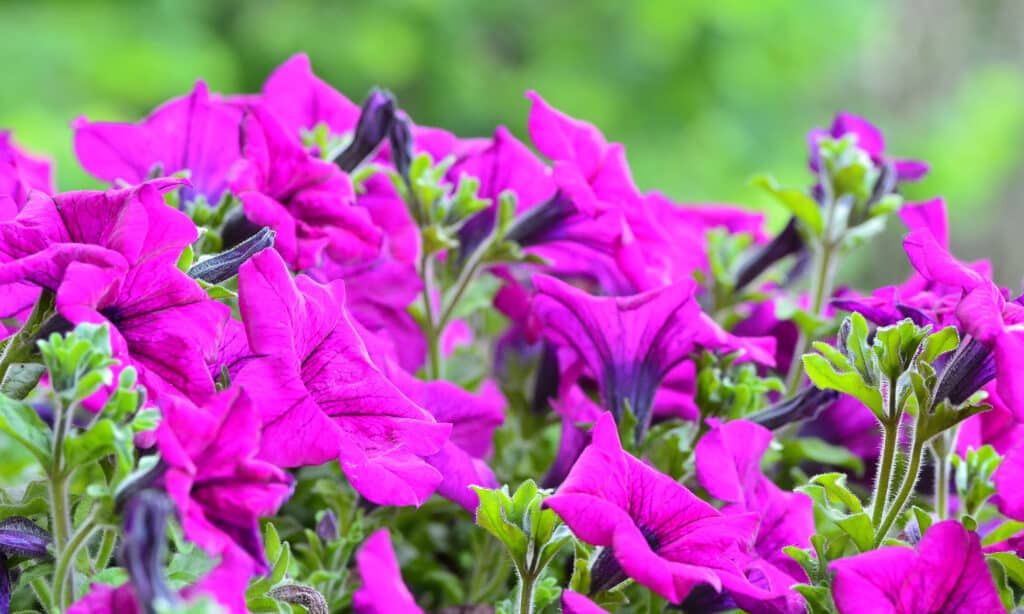
You can tell the difference between geraniums and pelargoniums by their flowers.
©Vojtech.Postulka/Shutterstock.com
You can usually determine which plants are geraniums or pelargoniums by looking at their petals or by noting their hardiness level.
- One easy way to identify geraniums vs. pelargoniums is by looking at their flowers. The five petals of geranium flowers have the same shape. However, the lower three petals of the traditional pelargonium flowers differ in shape from the top two petals. That said, modern pelargonium cultivars don’t always have this difference anymore, which may contribute to identification confusion.
- Pelargoniums are annuals or tender perennials. So, pelargoniums planted outdoors are less hardy in colder climates and only survive one growing season. True perennial geraniums come back every year. In other words, geraniums are hardy plants, and pelargoniums are tender plants.
Are you still trying to figure out which is which? Just look up their botanical names for clarification. For example, if the first word (the genus) is Geranium, the plant is officially geranium.
As for their similarities, geraniums, and pelargoniums are both in the Geraniaceae family. And both are named for their sepals that resemble birds. The name geranium originated from the Greek word for crane, and the name pelargonium originated from the Greek word for the stork.
Have Fun Growing the Best Perennial Geraniums That Come Back Every Year!
Perennial geraniums are an excellent choice for both beginning and experienced gardeners. With their beautiful blooms and easy care requirements, these flowering plants are sure to add color and style to your garden for many years to come. So why not try one of these six varieties in your garden this year?
Thank you for reading! Have some feedback for us? Contact the AZ Animals editorial team.

